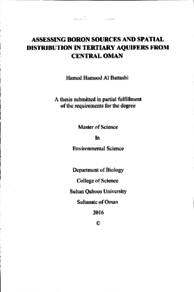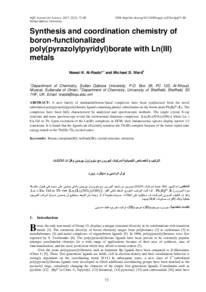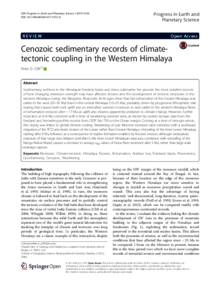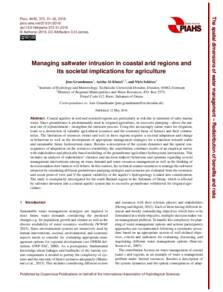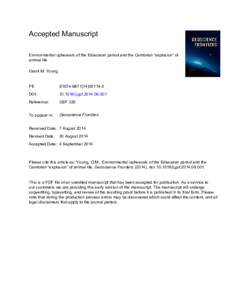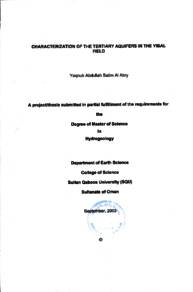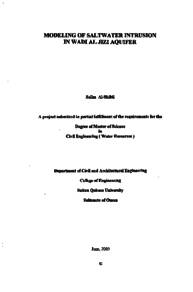وثيقة
Assessing boron sources and spatial distribution in tertiary aquifers from central Oman
الناشر
Sultan Qaboos University
ميلادي
2016
اللغة
الأنجليزية
الموضوع
الملخص الإنجليزي
Groundwater is the main source of water in arid areas and the increased demand for domestic water is putting this source under serious threats. Boron is one of the elements which determine the water quality in arid areas and high concentration of boron can cause serious health and environmental issues. In most studies the volcanic activity and seawater intrusion are the main sources of elevated boron in groundwater. The recent development in oil production in several desert areas of Oman has increased the demand of water for oil operations and human consumption. Drilling of the wells revealed that aquifers exhibited high concentration of boron which in many cases exceeds the WHO limits for drinking water (2.4 mg 1). The existing study is aiming to establish the relative distribution of boron in different aquifers from central Oman and identifying what are the natural sources of the elevated concentration of boron in water. More than 800 water samples data from Petroleum Development Oman (PDO) were analyzed statistically using principle component analysis (PCA), cluster analysis (CA) and inverse distant weight (IDW). The analysis show that more than 40% of the water samples exhibit higher boron concentration than the world health organization (WHO) limit and boron is correlated with solutes like Ca, Mg, Na, K and Li. The geological formations which show high boron are Fars and UeR while Rus and Dammam exhibit lower boron concentration. Northern and central areas exhibit high boron concentration than the southern area.
Solid samples were collected from the four formations and tested in the lab in batch and column experiment. The results were closer to the findings from the statistical analysis except that the Rus formation was releasing more boron than all formations. The experiments showed that there is a slight effect of ionic strength and time of contact on boron release while the Liquid/Solid was having significant influences on the release of boron from the rock,
Our lab results show that the release of boron can reach high concentrations according to the specific conditions of each aquifer like the liquid/solid ratio. Rus formation showed to release high amount of boron and most of the other formations are releasing boron higher than 1 mg 1. Which through the continue rain infiltration and fresh groundwater migration from the mountains towards the northem areas of Oman can built up high concentrations of boron. The lithology of the tertiary rocks is responsible for high release of boron in the groundwater and that is supported also from the mineralogy which shows minerals of shallow marine environment or playa (halites, gypsum etc).
المجموعة
URL المصدر
قالب العنصر
الرسائل والأطروحات الجامعية

